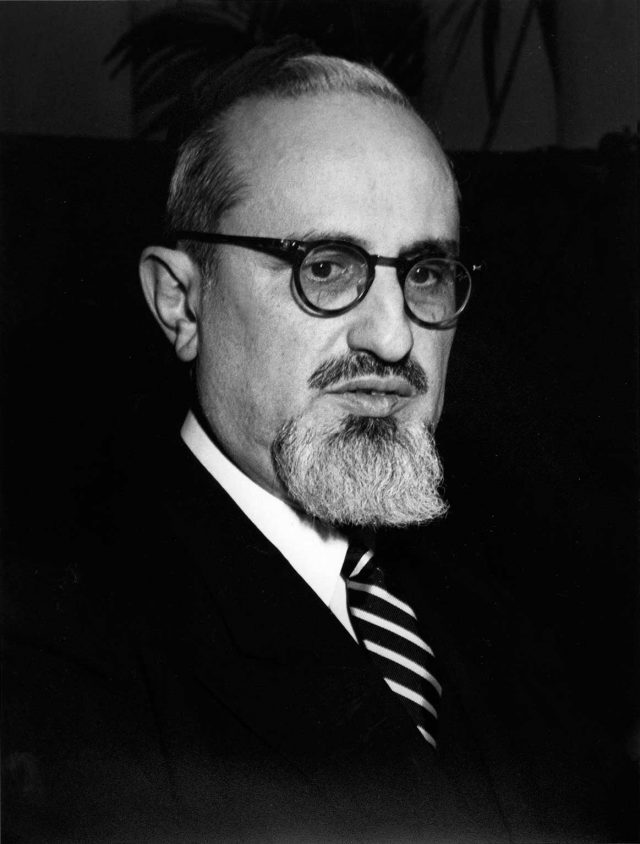Several years ago, while reminiscing with Rav Aharon Lichtenstein, Rabbi Joseph B. Soloveitchik’s son-in law, about the thrilling Brookline days of yore, he highlighted the unique Shabbat sessions with the Rav held between Mincha and Maariv at the Maimonides School Synagogue in Brookline. It was during these short interludes that a small group of lay and professional congregants would assemble around the Rav and ask questions on the weekly Torah portion or any topic of choice. Occasionally during these rare moments, the Rav would share an anecdote, a recent conversation or a meeting he had attended.
One Shabbat afternoon in the early 1980’s the Rav shared with us the following story:
It was the Rav’s annual custom to visit his wife’s grave in West Roxbury Massachusetts on Erev Yom Kippur. At the cemetery he was approached by a family who did not recognize him and assumed he was the “cemetery rabbi”. They requested he recite memorial prayers and patiently obliging he was dragged to various family graves despite the time constraints of that nightfall’s hallowed importance. Weeks later the family discovered the identity of their uber gracious “cemetery rabbi” and made a generous donation to the Maimonides School in Brookline, the Jewish Day School founded by the Rav and his wife, Tonya in 1937.
The Rav educated, nurtured and “raised up” thousands of students. He encouraged his students to be free and independent thinkers. Ergo, his students represent a broad range; from Haredi Orthodox to left of center liberal Orthodox. An early student of the Rav stated in his introduction to a book about the Rav’s philosophy: “my loyalty and love for him as my teacher never interfered with my own intellectual independence and critical appreciation of his writings”.
A quarter of a century after the Rav’s passing his teachings, which during his life were mostly confined to student notebooks and limited tape recordings, have received unprecedented exposure through dozens of books and websites published by his actual and “virtual” students. These publications shed a bright light on the Rav’s brilliant oeuvre.
Commentaries are now available on the Chumash, Talmud, Siddur, Machzorim, Grace After Meals, Haggadah and Tisha B’av Lamentations. In the academic sphere numerous manuscripts on the Rav’s Torah and philosophy have been published and a student’s classroom notes from the 1950-51 Rav’s class on the Guide to the Perplexed has been edited and released. A Habad Hasid wrote a 375-page book entitled “The Rav and Rebbe” specifically highlighting the warm relationship and similarities between the Rav and the Lubavitcher Rebbe.
What is unprecedented is that as a result of the varied religious development of his students the Rav is referred to and portrayed in these publications in vastly different ways. Some of his Haredi writers refer to him as the head of the “Boston Beis Din”, disregarding the Rav’s doctorate in Philosophy and decades long leadership as the Rosh Yeshiva at Yeshiva University. Others, while still quoting his teachings expunge his name entirely.
Yet, there are students who actively expose the Rav’s Torah to the Haredi community. A Rosh Yeshiva at Yeshiva University distributes free copies of the Rav’s commentaries on the Talmud to the Lakewood Yeshiva in New Jersey and the Brisk Yeshiva in Mea Shearim in Jerusalem. While the Rav once stated that were he to visit Israel he would be greeted by Haredi demonstrators, today, in fact, the Rav’s books sell very well in most Jerusalem neighborhoods.
On the other end of the religious spectrum some of the Rav’s students criticize him for not being more liberal or “progressive” in certain areas of Halakha. An early student of the Rav wrote about the Rav opening “two doors”; pointing to new paths but not walking through them. A rabbi living in Jerusalem who never met the Rav but claims to be familiar with his writings stated that the Rav was not a “Chadshan , a Halakhic innovator, and that his students admire him excessively.
In a recently published complex psychoanalytical and philosophical book on the Rav a professor at a major university in Israel provides rationale as to why he prefers to refer to the Rav as Soloveitchik, rather than referring to him as The Rav or Rabbi Soloveitchik. “That I refer to the subject of this book as Soloveitchik and not “ the Rav,” or even R. Soloveitchik, serves a double purpose, to relate to him from a more critical scholarly perspective, but also to accord him the status he deserves as a figure within the intellectual history of the past century….”
In Germany, a Jesuit priest has published his Ph.D thesis on the Rav called “The Human Condition”. This, despite his thesis advisor’s lack of enthusiasm for this project, in no small matter due to the Rav’s well known objections to inter religious dialogue with Christianity.
Many of the Rav’s devotees owe their rabbinic and academic prominence to the Rav’s brilliant teachings.
Indeed, the Rav raised up many disciples.

















